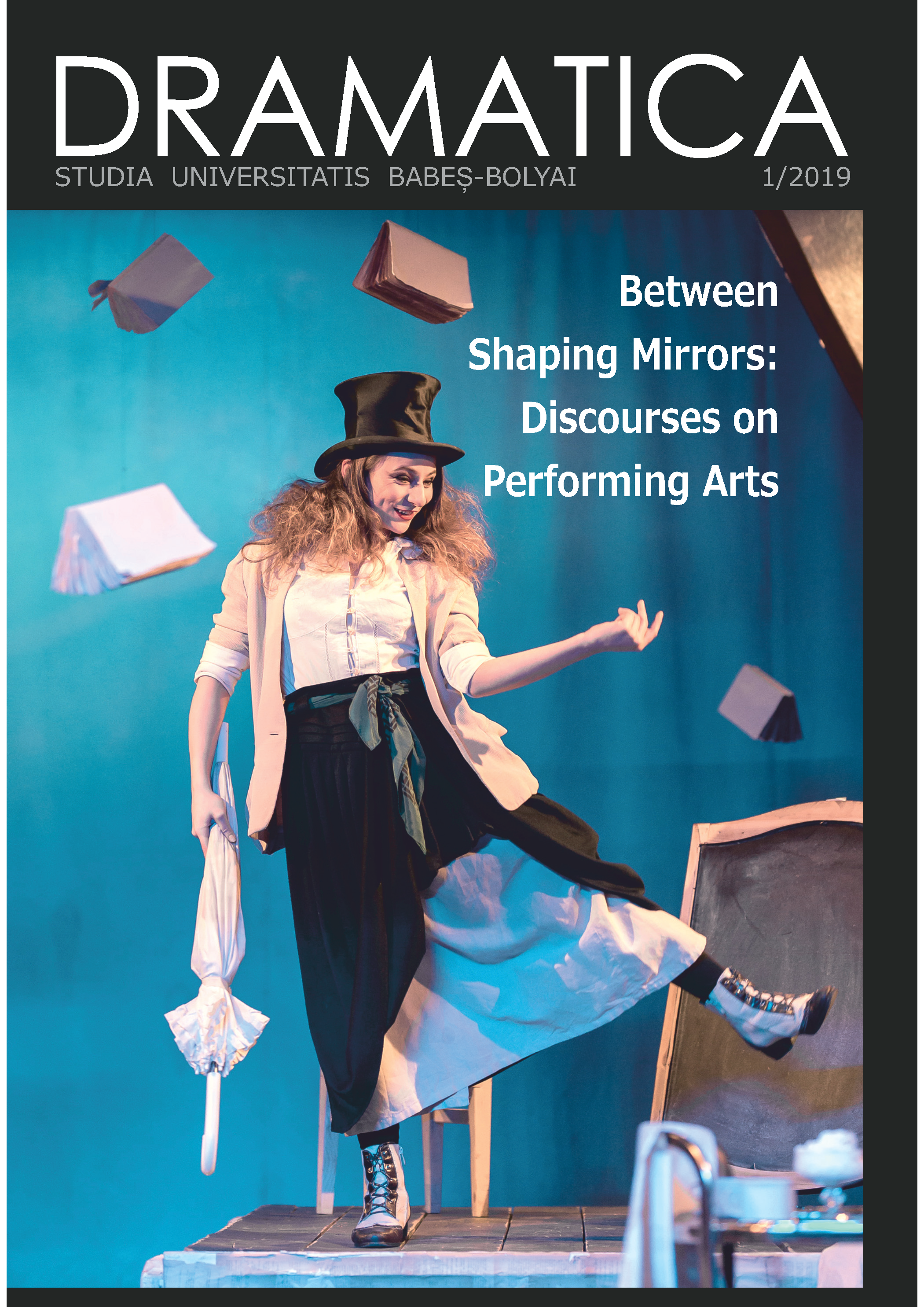Research in Film and Video: Artists Using Their Bodies in Cinematic Experiments
DOI:
https://doi.org/10.24193/subbdrama.2019.1.12Keywords:
Artists’ bodies, camera, reflected bodies, video art.Abstract
The aim of this article is to study the relationship between author and camera, the different aspects of this subtle relationship with technology. From the whole cinema history, many artists and film directors played different roles in front of the camera. Whether they interpret a scenario character, in case of fiction films, or use their body in search of cinematic effects, for video art, they choose to be in both parts of the camcorder at the same time. Why does this “video eye” sometimes turns towards the artist? Is it only meant to explore the outside world of the artist? Or is it a mirror which is sometimes inviting you to take a glance at yourself? The term used was first introduced by Gene Youngblood “The video eye” as it is a subtle metaphor for the main function of the camera. Why do so many artists use the camera with the purpose of showing themselves or their bodies into video experiments? Is it an expression of narcissism or is it a self-exploring tool? To find the answers for all these questions, the research looks into the playful role that the “video eye” has in experimental films and videos. This role was revealed by examining different kinds of esthetic results in comparison with the artist’s intention. For example, the body mirrored or reflected, seen in its choreography or as a performer in non-narrative films, are aspects which could draw a conclusion about the self-representation aesthetics.References
ASTRUC, Alexandre. “The Birth of a New Avant-Garde: La Caméra-Stylo.” In The New Wave : Critical Landmarks, edited by Peter Graham. London: Secker and Warburg, 1968.
BRIGIT, Richard. “Media Masters and Grassroot Art 2.0 on Youtube.” In Video Vortex Reader Responses to Youtube, edited by Geert Lovink and Sabine Niederer, 141–52. Amsterdam: Institute of Network Cultures, 2008.
FARBER, Manny. Negative Space: Manny Farber on the Movies. The New Wave. New York: Praeger Publishers, 1971.
KAIZEN, William. “Live on Tape: Video Liveness and the Immediate.” In Art and The Moving Image: A Critical Reader, edited by Tanya Leighton. New York: Tate Publishing, 2008.
KRAUSS, Rosalind. “Video: The Aesthetics of Narcissism.” October 1 (1976): 50. https://doi.org/10.2307/778507.
LUND, Christian. Bill Viola: Cameras Are Keeprs of the Soul. Louisiana Museum of Modern Art, 2011. https://channel.louisiana.dk/video/bill-viola-cameras-are-keepers-souls.
STEMMRICH, Gregor. “White Cube, Black Box and Grey Areas: Venues and Values.” In Art and The Moving Image: A Critical Reader, edited by Tanya Leighton, 430–43. New York: Tate Publishing, 2008.
YOUNGBLOOD, Gene. Expanded Cinema. New York: P Dutton & Co. Inc., 1970.
Downloads
Published
How to Cite
Issue
Section
License
Copyright (c) 2019 Studia Universitatis Babeș-Bolyai Dramatica

This work is licensed under a Creative Commons Attribution-NonCommercial-NoDerivatives 4.0 International License.


